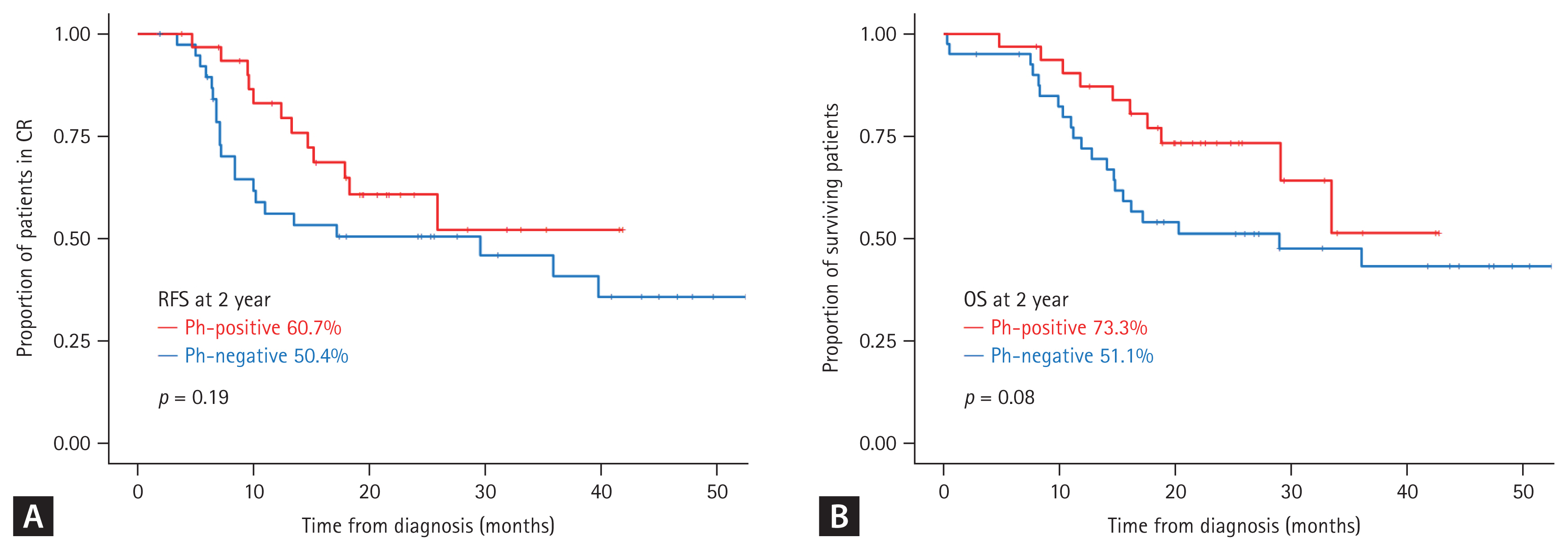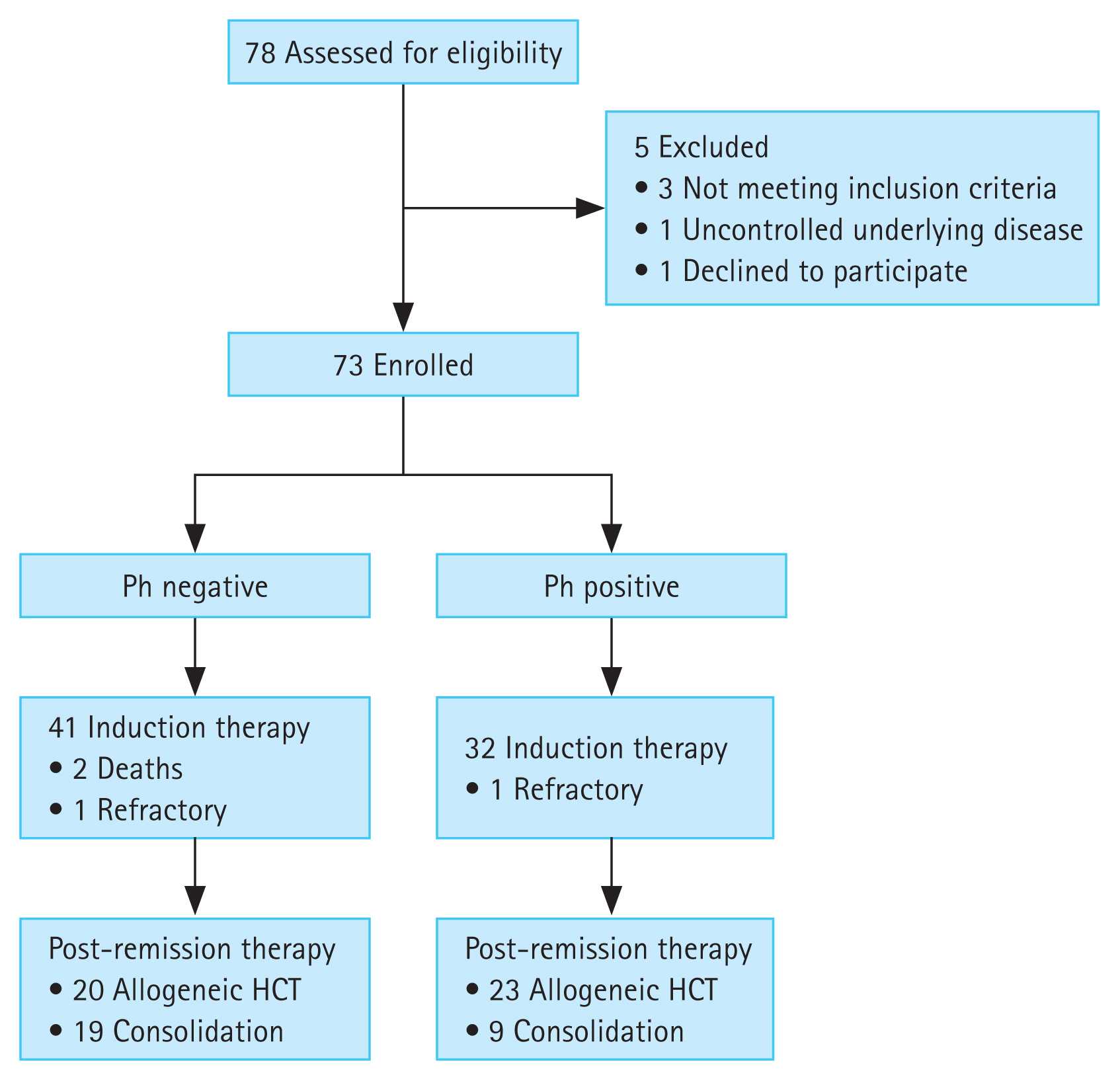1. Pui CH, Relling MV, Downing JR. Acute lymphoblastic leukemia. N Engl J Med 2004;350:1535ŌĆō1548.


2. Bassan R, Gatta G, Tondini C, Willemze R. Adult acute lymphoblastic leukaemia. Crit Rev Oncol Hematol 2004;50:223ŌĆō261.


3. Raponi S, De Propris MS, Intoppa S, et al. Flow cytometric study of potential target antigens (CD19, CD20, CD22, CD33) for antibody-based immunotherapy in acute lymphoblastic leukemia: analysis of 552 cases. Leuk Lymphoma 2011;52:1098ŌĆō1107.


4. Kantarjian H, Thomas D, Jorgensen J, et al. Inotuzumab ozogamicin, an anti-CD22-calecheamicin conjugate, for refractory and relapsed acute lymphocytic leukaemia: a phase 2 study. Lancet Oncol 2012;13:403ŌĆō411.


11. Kantarjian HM, OŌĆÖBrien S, Smith TL, et al. Results of treatment with hyper-CVAD, a dose-intensive regimen, in adult acute lymphocytic leukemia. J Clin Oncol 2000;18:547ŌĆō561.


12. Kantarjian H, Thomas D, OŌĆÖBrien S, et al. Long-term follow-up results of hyperfractionated cyclophosphamide, vincristine, doxorubicin, and dexamethasone (Hyper-CVAD), a dose-intensive regimen, in adult acute lymphocytic leukemia. Cancer 2004;101:2788ŌĆō2801.


13. Coiffier B, Lepage E, Briere J, et al. CHOP chemotherapy plus rituximab compared with CHOP alone in elderly patients with diffuse large-B-cell lymphoma. N Engl J Med 2002;346:235ŌĆō242.


14. Thomas DA, Faderl S, OŌĆÖBrien S, et al. Chemoimmunotherapy with hyper-CVAD plus rituximab for the treatment of adult Burkitt and Burkitt-type lymphoma or acute lymphoblastic leukemia. Cancer 2006;106:1569ŌĆō1580.


15. Romaguera JE, Fayad L, Rodriguez MA, et al. High rate of durable remissions after treatment of newly diagnosed aggressive mantle-cell lymphoma with rituximab plus hyper-CVAD alternating with rituximab plus high-dose methotrexate and cytarabine. J Clin Oncol 2005;23:7013ŌĆō7023.


18. Maury S, Chevret S, Thomas X, et al. Rituximab in B-lineage adult acute lymphoblastic leukemia. N Engl J Med 2016;375:1044ŌĆō1053.


20. Malard F, Mohty M. Acute lymphoblastic leukaemia. Lancet 2020;395:1146ŌĆō1162.


24. Esteban RE, Christianne B, Alvaro A, Demichelis-G├│mez R. Prognostic effect of CD20 expression in adult B-cell acute lymphoblastic leukemia. Clin Lymphoma Myeloma Leuk 2018;18:361ŌĆō367.


25. Alduailej H, Kanfar S, Bakhit K, et al. Outcome of CD20-positive adult B-cell acute lymphoblastic leukemia and the impact of rituximab therapy. Clin Lymphoma Myeloma Leuk 2020;20:e560ŌĆōe568.


26. Szczepanowski M, Richter J, Kehden B, et al. CD20 expression and response to rituximab treatment in B-cell precursor lymphoblastic leukemia - results of the GMALL 08/2013 trial. Blood 2018;132(Supplement1):1409.


29. Aldoss I, Stein AS. Advances in adult acute lymphoblastic leukemia therapy. Leuk Lymphoma 2018;59:1033ŌĆō1050.


30. Kaito S, Kurosawa S, Najima Y, et al. Allogeneic hematopoietic stem cell transplantation for adult Philadelphia chromosome-negative B-cell acute lymphoblastic leukemia in second complete remission. Transplant Cell Ther 2022;28:326e1ŌĆō326.e10.











 PDF Links
PDF Links PubReader
PubReader ePub Link
ePub Link Full text via DOI
Full text via DOI Download Citation
Download Citation Supplement figure 1
Supplement figure 1 Print
Print



